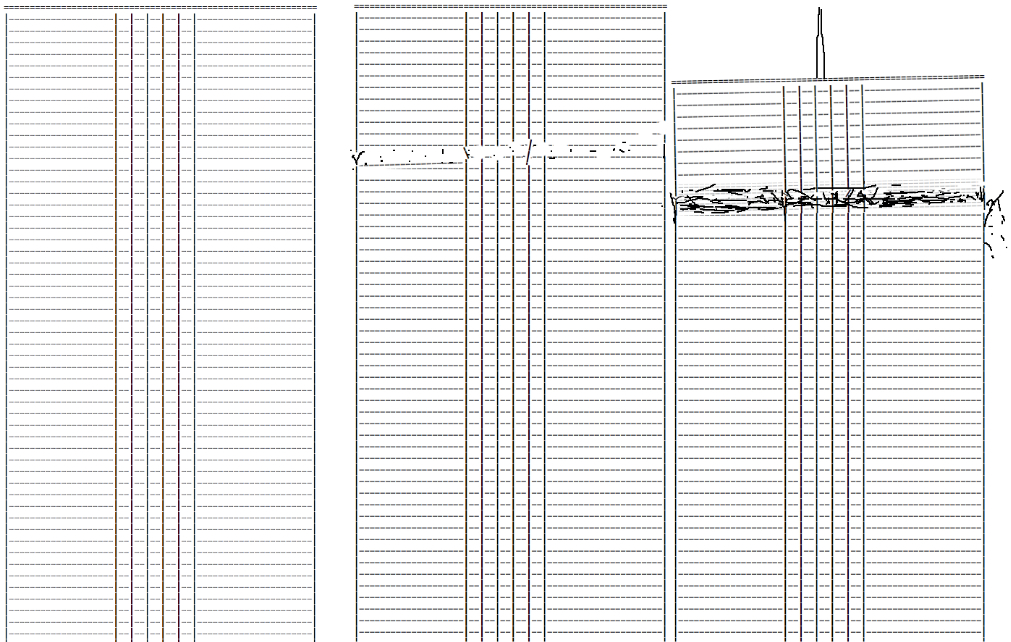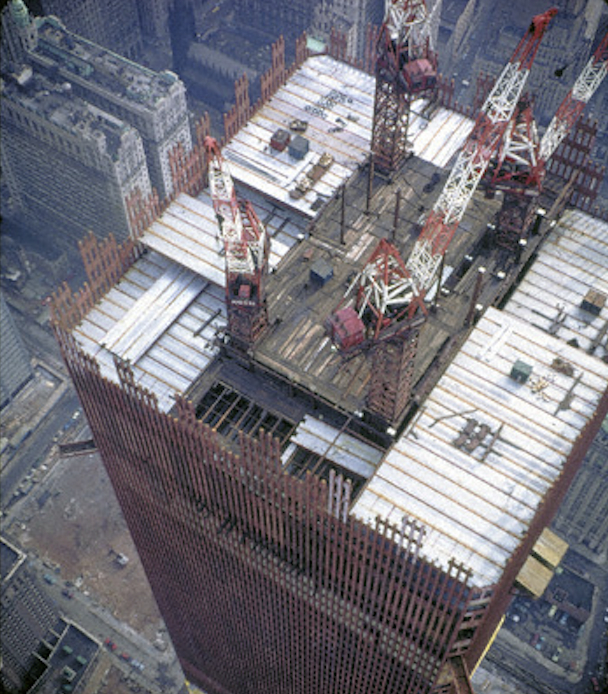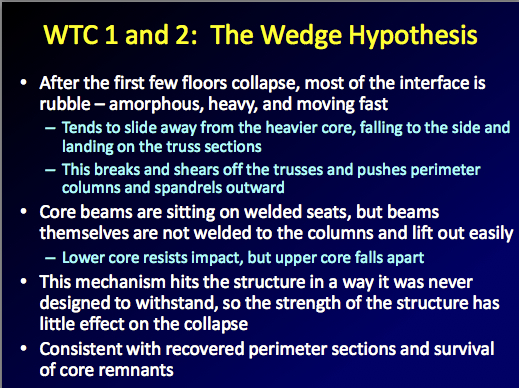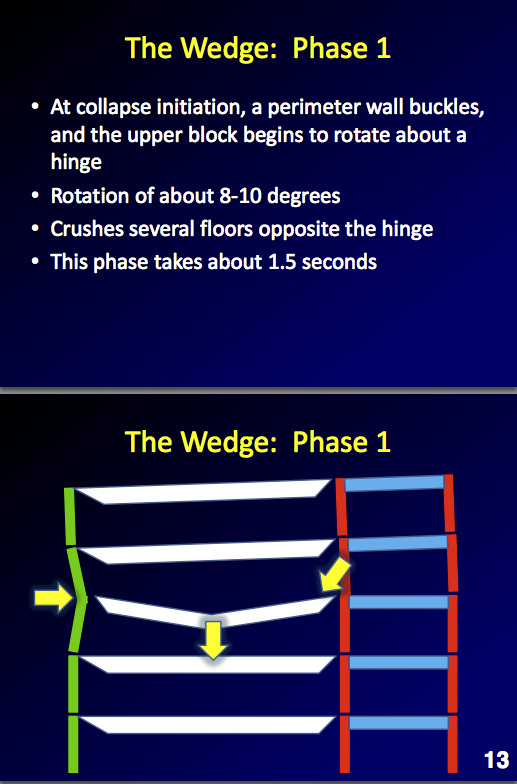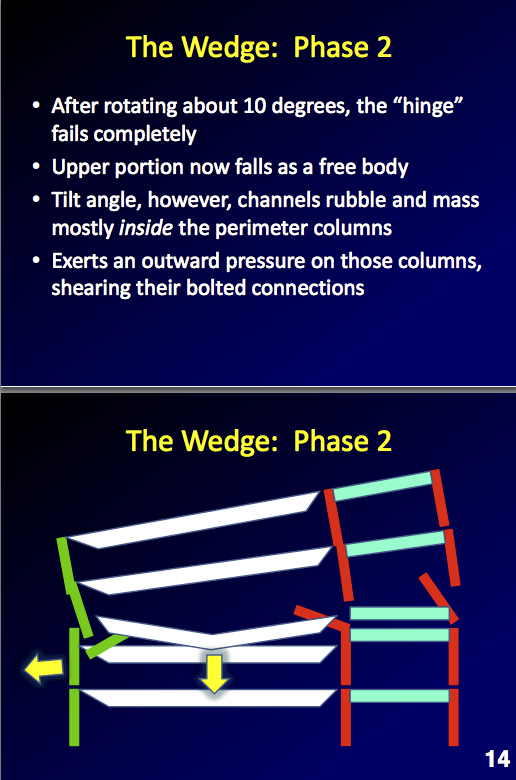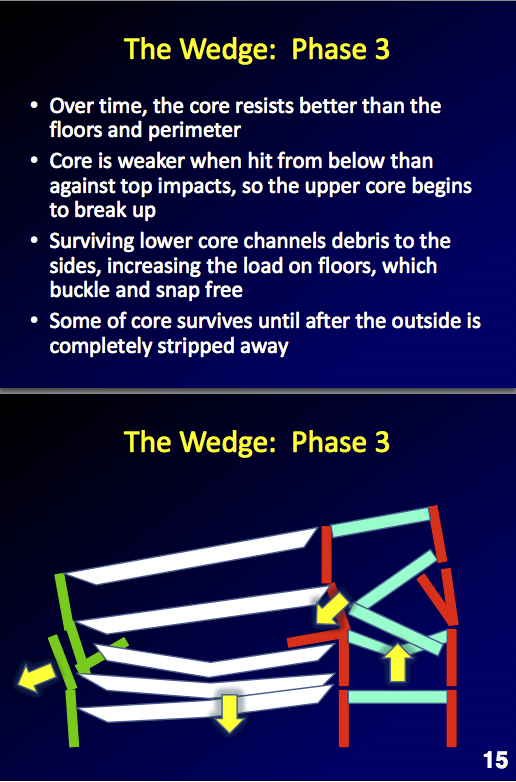Hitstirrer
Active Member
At the risk of adding a prologue to the epic, you may want to start with this. This is the train analogy with my mistake added in.
I will get around to your full explanation, but your prologue popped up first.
Analogies rarely capture all the nuances that they are intended to display and usually disappoint both the presenter and the reciever. I fear thats the case with yours - and will be by mine as below.
One analogy that was suggested many years ago still holds some merit though. The classic one about a line of cars.
To set the scene. The towers were far stronger at the base than the top - somewhat like a pyramid but without that shape. They were built in thirds with the lower third using much thicker steel sections than above.Then the central third less heavy steel and the top third relatively thinner steel. In addition there were some floors that were very heavily constructed as they were designed to hold heavy machinery and plant rather than office furniture.
The analogy proposes a line of cars with 35 Hummers nose to tail followed by a USP truck ( engineeer floor ) then 35 SUVs followed by a USP truck, then 35 saloons followed by a golf cart. All nose to nose with no gaps and the first Hummer parked against a cliff. Every vehicle to comply with current regulations on crumple zones front and rear.
Then half of the saloons and the cart are close coupled together and backed off to create a space. Into that space is inserted the badly burned shell of a saloon that has been sideswiped by a truck and is bent out of shape and very weak structurally. Then, you arrange for the ones you backed away to all engage drive together and accerate forwards as a solid mass at 32ft/s/s to finally destroy the burned out saloon and together strike the undamaged crumple zones of the next saloon.
(NB. For the purists this contavenes Bazants paper because he assumed that the burned out car didnt exist and just left that space vacant to allow the accelerating cars to achieve 19mph before impacting the first saloon. Just another problem to ponder on here )
Would that upper block of saloons crush very far into the line of parked cars ?
Of course an initial complaint would be that the first car, and subsequent cars to be struck, would have to fire their engines up instantly at impact, and drive themselves forward at 32ft/s/s to simulate gravity. To allow the analogy to proceed it must now be imagined that this line of cars is somehow being held vertically so that no engine power is needed and just gravity is to be the total motive power. The first Hummer in line now nose on the ground.
Would the upper block of saloons crush very far into the line of (now vertical) cars ? Or is it more likely that the fall would be arrested, or that the upper block was forced off to fall to one side.
Through the crumple zones of the remaining saloons, designed to absorb energy, ( like deforming steel ) - pulverise anything that isn't steel and throw that debris over a radius of many miles - then destroy a USP truck - then 35 SUVs and so on until all of the Hummers also destroy themselves and eject all their pulverised fittings to the four winds too. And to do all that in a perfectly vertical direction. At no time does the accumulating line of crushing cars get diverted to one side and fall away. They remain firmly in line and proceed in that line from start to finish.
Hmmmm. That is what we are asked to accept though.
Alternatively, just line up a School bus, a Hummer and saloon and drive a VW Golf GTI into the back at 100mph. Does it crush through the lot or is it thrown to one side due to any slight non symmetrical force ?
Either way - even though I hate analogies - they do sometimes highlight the problem as observed by many people.
Back to your epic entry though @OneWhiteEye. I will let you have my comments on that in due course.

